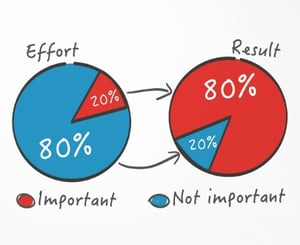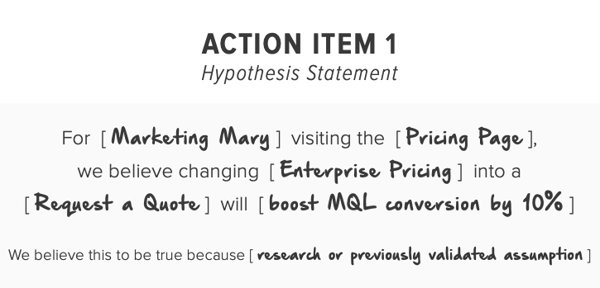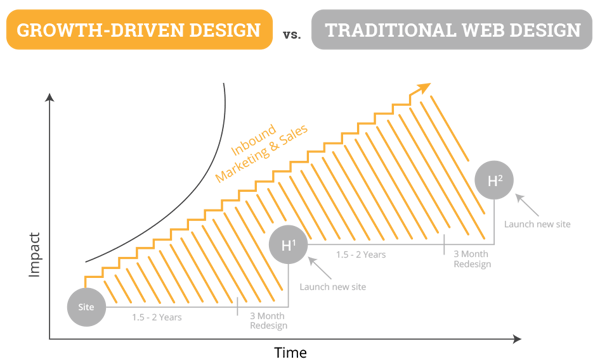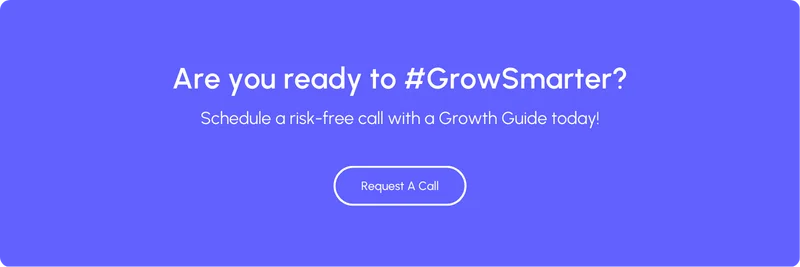Launch Pad Websites are Bringing Sexy Back
Your Website Design Process Shouldn’t Feel Like a Bad One-Night Stand
That’s right. I said it. So many teams out there cringe when it comes to the announcement that they’re about to rebuild their website. Why? Because they go through a ton of work, buy all the drinks, talk it up, only to wake up the next morning to realize what they pictured wasn’t what they got. Do we even need to mention the walk of shame afterwards?
It shouldn’t be that way. Your website redesign should be a sexy, long-lasting relationship that others are jealous of. That’s why we recommend dumping the traditional pick up game of building websites and get with the Launch Pad program. We cannot emphasize enough how big of a difference Launch Pad websites are making in the web design world. But we’re going to try!
Part of GDD
We’ve touched on what Growth-Driven Design methodology (GDD) is, how important the strategy phase is and highlighted a couple of high-level benefits of using the overall method for your website build. But what really is a Launch Pad site? Why is it smarter to go this route instead of being a traditionalist? Why is it so important for the GDD method? All these questions and so many more!
To begin to answer your questions, let’s do a quick recap of what GDD is and its purpose and then we can discuss how Launch Pad websites can work harder, better, faster, and stronger for your company.
Here’s our SparkNotes definition of GDD:
A method of building your website to launch quickly in constant incremental steps and use tactics that base your build on what your users actually want (instead of what your C-suite think they want) which results in happy customers and happier employers, when done correctly.
The point is to do everything in steps and get it out there instead of waiting until the project is totally done (FYI: your website should always be evolving so this concept is a problem because it’s never really done). So instead of waiting until your website is “perfect”, you set up a Launch Pad site to start doing work for you. The work it does is important. Its job is to gather data on your users while you continuously improve that bad boy into what will be your hardest working sales and marketing team member that never asks for time off. Don’t tell HR!
The What & How of a Launch Pad Site
What is it?
To put it simply, it’s the first version of your website. It’s not your final product but it is the groundwork for all your great additions that you’ll add later. It’s a website that looks and performs better than what you currently have, so don’t worry!
How to Build It
First make sure you’ve gone through the Strategy phase that we laid out previously. That’s going to give you the direction and purpose for these next steps. Remember that wishlist you and your team put together previously? This is where it will start to come into play.
Running an 80/20 Analysis on Your Wishlist

Take a look at that wishlist of items your team decided was necessary to put on the website. Start prioritizing them in terms of what will be done first. You want to narrow it down to the 20 percent of items that will make 80 percent of the impact and value for your users. This is called the 80/20 Rule.
Then, you'll want to look at that top 20 percent of items your team selected and start asking yourself if they are a “must have” or rather just “nice to have”. If it's a “nice to have” then throw it back into the wishlist because it can be done later and isn’t needed right now.
Last, comb through the rest of the wishlist items and start sorting them based on the questions: are they absolutely necessary for the Launch Pad site? Or, can they wait for further down the road?
Build Hypothesis Statements for the Wishlist Items
Once you’ve narrowed the items down, you need to create a hypothesis statement for each action item. This will help you relate the item back to the overall goal of your website and will bring some clarity as to why you’re building out that element. HubSpot has a nice little example:
Use this to check and ensure the action items are matching your goals your team set in the strategy phase. If they’re not, changes will need to be made to verify you are spending time on things that will drive the most value and impact for your internal team and your website visitors.
Pick Your Method
Even though every Launch Pad site starts with your wishlist, there isn’t really a one-size-fits-all solution for actually getting the site launched. But there are a few methods to choose from so be sure to read each one and see which one fits your situation the best!
- Refresh Method: If your site already performs pretty well (or you recently relaunched but some small changes need to be made), then you’ll most likely want to go with a simple refresh instead of a large overhaul. Launch some of the major items from your wishlist that will align your current website with your newly developed strategy. Then keep going. Simple enough, right?
- Kick-Start Method: If you need a super quick redesign, this method helps you achieve that by having you use pre-built assets, website templates and other content that’s already created. While this does save time and money, it, unfortunately, does mean limitations based on what the templates will offer.
- Launch & Expand Method: This one is for very large websites because it breaks the launch into smaller phases rather than having the entire Launch Pad done by a certain due date. It could be that you break it into 3 or 4 phases that focus on a different area of the website at a time! The trick here will be laying out the different phases and making sure each one is done on time.
Run Sprint Workshops
Set aside dedicated time periods where your team can get together to develop specific deliverables that can be tested on users. This will involve collaboration and real focus so I recommend going off-site and leaving phones and other distractions.
Focus on Effective Content
Start working on your content immediately. It doesn’t have to be totally new content, it can be recycled from your old site. The point is to use your research and understanding of your wishlist to improve the content to be effective. This content can be text, video, audio, photos, etc. It needs to be engaging with your users and encouraging of specific behaviors.
Improve Your Internal Systems and Processes
Use this time period to invest in what are called “internal efficiencies”. By that we mean, remove roadblocks that could hinder your team from getting done what they need to get done. Give them the right tools to empower them to take action! Whether that means adopting a good CRM or collaboration tools, or even building reusable templates to make the whole process easier and marketer-friendly!
In addition, go ahead and have them implement tools such as heat mapping so when you’re ready for the Go Live, your website is collecting data on user interaction. This will help them with the Continuous Improvements phase (more on that in a later blog) as they’ll be able to see how people are actually using your Launch Pad site.
Why is this Better than the Traditional Way?
I’m sure you can already start to see why the GDD route is better but just to make sure, let’s start with the problems of doing a traditional web redesign. Typically when it comes to traditional web design, you'll find the following problems:
- It’s a laborious and time-consuming process that takes up your company’s resources!
- It’s incredibly expensive -- a larger, more complicated website can run you between $20,000 - $40,000! Ouch!
- It requires large upfront payments which can make the C-suite nervous.
- Statistically speaking, the project normally goes over budget and time frame!
- Unforeseen obstacles are practically a guarantee.
- You’re looking at about a 3 to 6-month time frame to complete!
- Normally, it’s based on user data that is potentially outdated.
- It tends to be built on what your company thinks they know about their visitor behavior…
- Once it’s “done” it sits static for at least 2 years before the process starts over again.
That’s a long list of pain that just isn’t necessary. Why? Because when it comes to building a Launch Pad website using GDD, you’re looking at:
- Quick results that gather live user data which you can act upon quickly!
- Is overall more efficient and ultimately saves you time. Who doesn’t want that?
- The average cost is 2-3 times less and is spread out over time.
- It only takes about 30 - 60 days to launch!
- It gives you trackable ROI faster than the traditional route.
- Takes up less resources at your company.
- It’s not as disruptive to your current users. This means better user experience and they stick around.
- Enables targeted adaptations to be implemented piece-by-piece on an ongoing basis.
- It never stops evolving and improving which means it will stay current and relevant to your users.
- It helps keep your team sane and happy.
- It helps keep your C-Suite sane and happy.
- It ultimately helps keep you sane and happy.
I mean, the list can go on...
The Choice is Yours
At Sauce, we would never say “You must do this”. If, after reading all these benefits to using GDD for your next website, you still are not convinced to stray from the traditional web design path then that’s okay. Our job is to help you grow smarter with your business and this is what we recommend. However, if you are ready to bring the sexy back to your website, schedule a call with us and let’s start talking about what your growth goals are. After all, that is what we do!
.webp?width=12693&height=4513&name=Sauce%20Logo%20Dark%20Ht%20(1).webp)

.webp?width=180&height=64&name=Sauce%20Logo%20Dark%20Ht%20(1).webp)











